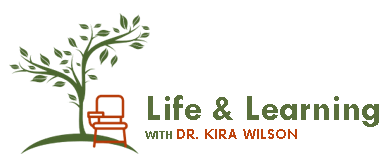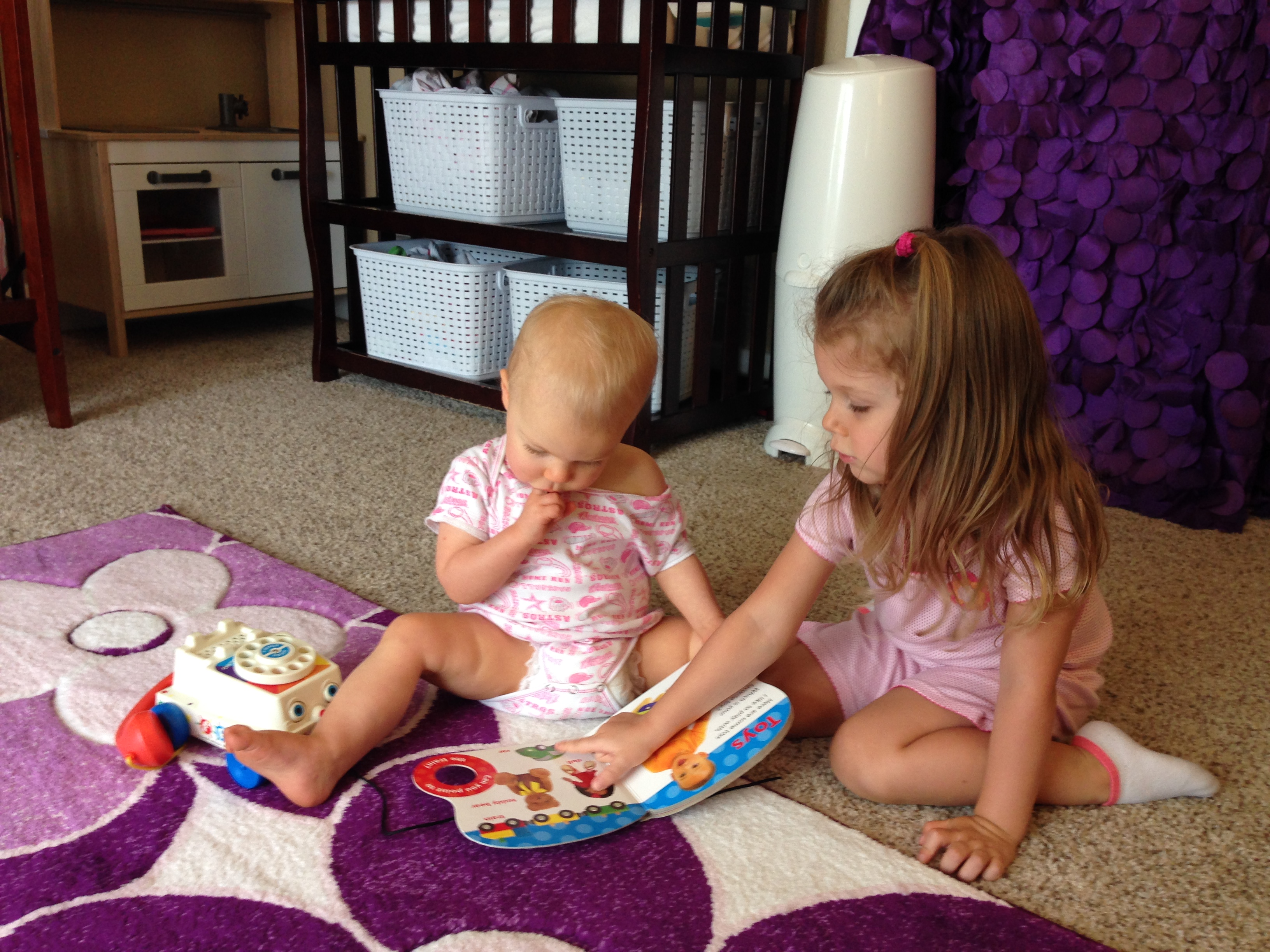Three Steps to Reading Readiness
First Step-Print Awareness
In preparation for reading, children must first develop print awareness. Print awareness occurs when a child begins to understand that written language is related to oral language. This is accomplished by providing a language rich environment and occurs as a result of parent-child interaction with books, magazines, and other printed material. Children learn that like spoken language, printed language communicates a message, provides information, and is enjoyable. This awareness is needed for children to become successful readers and should begin prior to the start of school.
Print awareness is acquired through read-aloud, word games, and pointing to words during a read-aloud. By observing an adult or older child read, a young child learns that reading is done from left to right, letters vary in size and shape, and punctuation is found at the end of sentences.
Through the process of reading to a child, children learn a plethora of information about books. Children learn about authors and enjoy illustrations. They learn how to turn pages, how to hold a book, and much more. Learning the concept of “word” is discovered as children observe that some words are small, some are large, and that words are separated by spaces.
Books like Brown Bear, Brown Bear, What Do You See?, Silly Sally, Are You My Mother? and Green Eggs and Ham, with predictable, repetitive patterns, help children develop and expand print awareness. An example of a repetitive pattern comes from Green Eggs and Ham by Dr. Seuss: I will not eat them in a box, I will not eat them with a fox, I will not eat them here or there, I will not eat them anywhere.
Ten Ways to Develop Print Awareness
The best way to develop print awareness is through a variety of print-rich experiences.
- Help your child learn how to hold a book correctly.
- When reading to your child, point to the words on the page.
- Talk about words being written from left to right. Ask: Where is the front of the book? Where is the back of the book? Let your child turn the pages.
- Ask your child to point to the first word on the page, the last word on the page, the longest word on the page, etc.
- Bring awareness to other printed material like food labels, signs at the grocery store, road signs, license plates, magazines, and mail.
- Read books with predictable, repetitive patterns.
- Read the title page with the author’s name. Talk about the illustrations in the book you are reading.
- Make signs using sentence strips to label things around the house or in your child’s room (bed, closet, door, window, clock, dresser, toy box, etc.)
- Have your child dictate a caption for their drawing or art work to accompany the piece.
- Have your child help you sort the mail by family members’ name.
Second Step-Phonemic Awareness
Secondly, children must develop phonemic awareness. Phonemic awareness is the ability to hear distinct sounds within a word and understand that sounds can be manipulated to create news words by deleting, substituting or changing initial, medial, or ending sounds (e.g. fig, wig; sat, sad; hot, not; pan, pin). Phonemic awareness is primarily an oral exercise.
Phonemic awareness is understanding that words are created using individual sounds called phonemes. The word c-a-t, is constructed with three distinct sounds or phonemes. The word sh-o-p also has three separate sounds; the word s-t-r-ai-ght has five sounds. Phonemic awareness differs from phonics in that phonemic awareness relates to the hearing of the sound rather than the written pattern and rules for “sounding out”.
Once a phonemic sound is introduced, it is best to use that sound in the context of a word, then words in a sentence. This use of the sounds helps to associate the sound to a letter, sound to a word, and word to word meaning. For example: /a/ in the word at; /s/ in the word sat; /p/ in the word Pat; Pat sat on the mat.
Five Phonemic Awareness Tasks
The ability to hear individual sounds in words is needed before phonics instructions begins. In addition to learning the letter names and sounds, Adams (1990), believes children should acquire the following five phonemic awareness abilities in preparation for reading:
 Rhyme and alliterations (A Giraffe and a Half, Lily likes to lick lollipops)
Rhyme and alliterations (A Giraffe and a Half, Lily likes to lick lollipops)- Categorize phonemes (can identify words that begin with the same sound-sun, sat, silly; end with the same sound-fun, run, sun; have same medial consonant-missing, messy: have same vowel sound-take, cake; boat, mole; sun, mug; top, hot)
- Oral blending (able to hear and blend phoneme sounds to make a word-cl…ap-clap; /r/ /u/ /n/-run)
- Oral segmenting (able to hear number of sounds or syllables in words-/s/ /a/ /t/ as three sounds; /s/ /n/ /a/ /ck/ has three sounds.
- Phoneme manipulation (able to substitute letter sounds to make new words-hat, ham; map, mop)
Remember phonemic awareness is primarily an oral-auditory exercise, having to do with developing the ability to process and distinguish sounds. Reading nursery rhymes and rhyming picture books will help develop phonemic awareness. Choose one or two titles from a list of these Mother Goose books to add to you permanent library. When reading repetitive books or nursery rhymes, encourage children to anticipate the rhyme by pausing and letting them finish the sentence or verse. Clap when reading rhyme so that children hear the rhythm. Clapping games like Pat-a-Cake, Double Double This This, Miss Mary Mack, and others can help with phonemic awareness and make listening fun. Visit the library for story time and make read-aloud time a daily habit in the home. The benefits of reading to your child are numerous. This practice has significant impact on your child’s reading ability and should not be neglected.
Review: Rhyming Books with Predictable and Repetitive Stories to Develop Phonemic Awareness
Third Step-Letter Recognition
 The next step to reading readiness is letter recognition, followed by phonics instruction, which you can read about in my next post. Typically, phonics instruction begins in Kindergarten and continues through Second Grade. The process of learning letters requires more than reciting the alphabet. Knowing the letters means that children are able to identify letters out of order. Once the names of the letters are mastered, children are taught the corresponding sound or phoneme for each letter. Begin with lower case letters since these are encountered more frequently in reading or teach upper and lower together.
The next step to reading readiness is letter recognition, followed by phonics instruction, which you can read about in my next post. Typically, phonics instruction begins in Kindergarten and continues through Second Grade. The process of learning letters requires more than reciting the alphabet. Knowing the letters means that children are able to identify letters out of order. Once the names of the letters are mastered, children are taught the corresponding sound or phoneme for each letter. Begin with lower case letters since these are encountered more frequently in reading or teach upper and lower together.
Alphabet books are a great way to teach both the letter name and sound. Let me share a pet peeve I have with alphabet books before giving you some tips on using them. Sometimes the picture used to represent a letter sounds is incorrect or confusing. For example-the word owl should not be used for the letter-sound “o”. An image of an orange is not a good option either. Beginning readers learn the short and long sound of “o” long before learning the irregular sound of “o” in words like owl and orange. Octopus and olive have a short vowel “o” sound. Open and oboe have the long “o” sound.
Click here to find a list of “50 Best Alphabet Books”. In his book, Phonics from A-Z: A Practical Guide, Blevins (2017) provides “35 quick-and-easy activities for developing alphabet recognition” along with his list of alphabet books. The following teaching tips are offered in the second edition of the book (Blevins, 2006).
Tips for Teaching with Alphabet Books (letter and sounds) 
- Read the book the first time in its entirety, without pauses, so that children can enjoy the language and illustrations.
- Reread the book and discuss items of interest, such as finding the objects in the illustration that begin with the sound the letter on that page represents. Keep the discussion playful and game-like, limiting the letters you focus on to one or two each day.
- Create letter charts, using the words and pictures in the alphabet book. Have children identify words and pictures with a target letter/sound to add to each chart.
- Have children create their own alphabet books using the pattern of the book you just read.
Providing a language rich environment, with lots of inviting books, and someone to read them, will help toddlers develop print awareness and prepare them for reading instruction. Spend lots of time reading to your children. The benefits are undisputed. Use the following links to find books that will develop phonemic awareness and alphabet books to help with letter recognition.
Rhyming Books with Predictable and Repetitive Stories to Develop Phonemic Awareness


